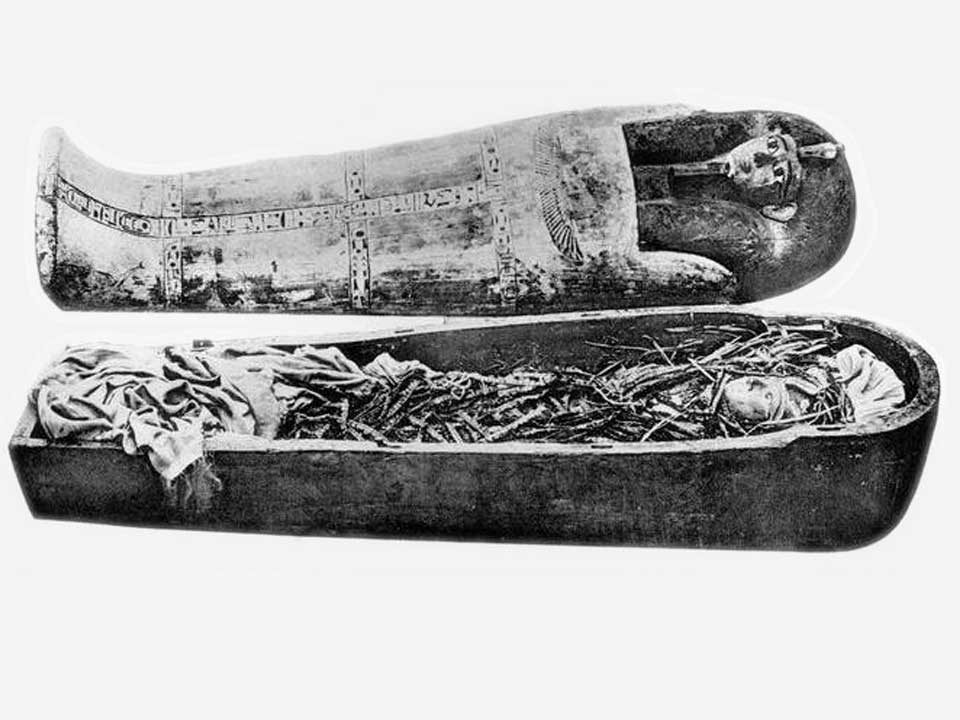New Kingdom Mummification

In the 1999 movie The Mummy, the New Kingdom priest Imhotep is mummified alive. He is wrapped in spiral bandages and fed to carnivorous scarab beetles before being entombed in a coffin, then a stone sarcophagus, and ultimately buried at the base of a statue. Luckily for Imhotep (who in reality was an architect from the Early Dynastic Period), there is no evidence of anything like that ever happening, right down to the bugs.
There are many surviving mummies from the New Kingdom, meaning we can clearly see how burials differed for rich and poor Egyptians. Royal mummies were treated with expensive oils and resins and were wrapped with their arms folded across their chests. Lower classes did not receive such treatment; while they were wrapped, they had their arms placed at their sides.
Overall, the process of mummification became much more standardized. Once again, the brain was removed through the nose and organs were surgically removed and placed in canopic jars, however, by the end of the New Kingdom, the incision point shifted from the left side of the abdomen to a spot below the navel. Egyptians returned to the method of wrapping limbs individually in spiraling bandages, though it was more elaborate than in previous eras. Shrouds were colorful and sometimes decorated with spells, and separated from inner layers of fabric by resin.
For the wealthy, hair was often preserved in the fashionable styles of their time of death, including elaborate braids, wigs, or extensions. Fingers and toes were also decorated, sometimes in gold. Similarly, the famous golden mask of the pharaoh Tutankhamen is a good representation of the elaborate of funerary masks the wealthy enjoyed; lower class citizens had similar masks made instead from painted cartonnage.
Regardless of class, it became common to fill the mummy’s body with sawdust and other materials so that they could still be recognizable after mummification. This proved successful when distinct nose and cheekbones helped to identify the mummy of Ramses I, who had been on display anonymously in a Canadian museum for over 150 years.

At-A-Glance
- Elaborate burials for the wealthy and simple burials for the poor highlighted class difference.
- As well as being spiral-wrapped, bodies were covered in colorful shrouds.
- Hairstyles were often preserved, giving insight into fashion trends.


